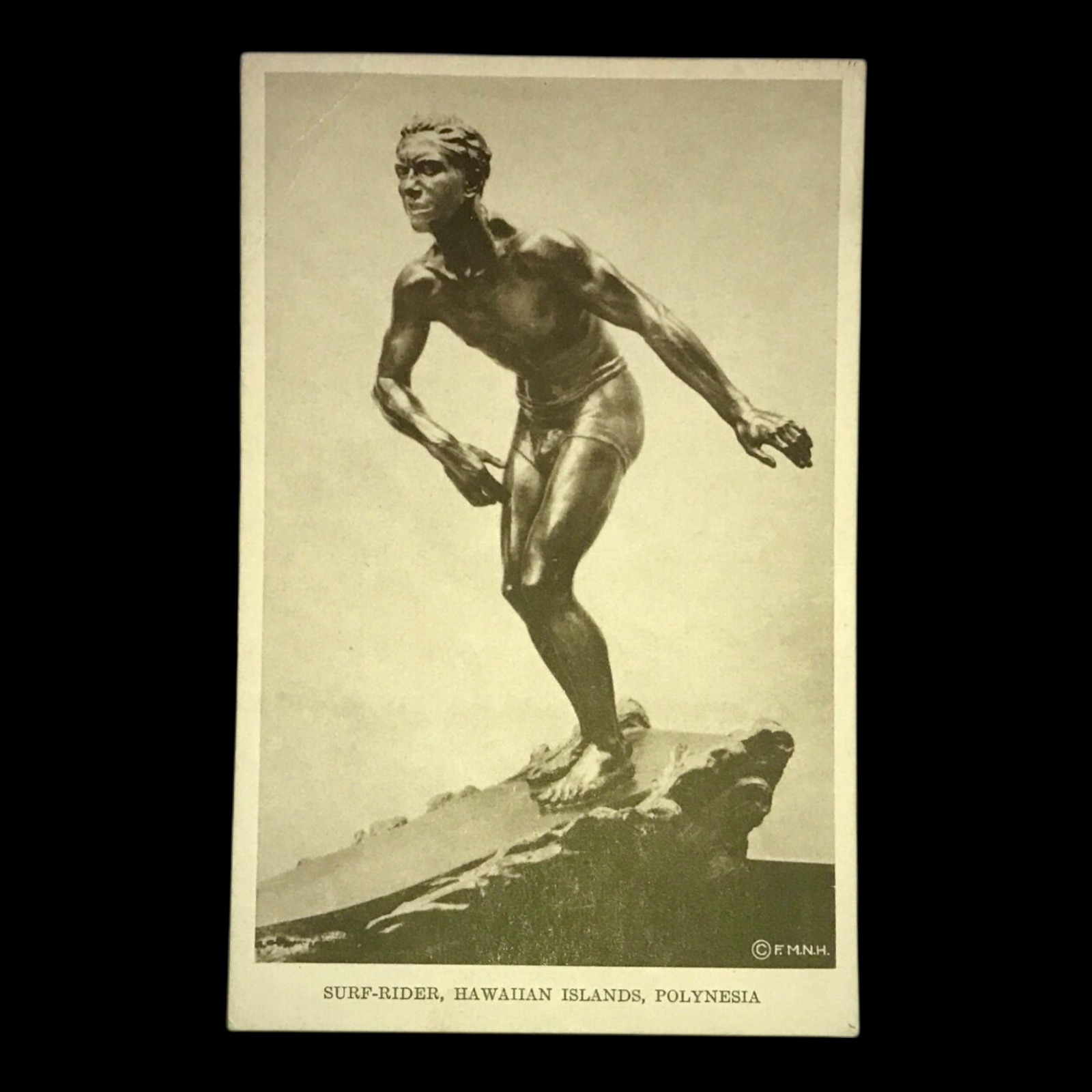Today, I intend to write a blog post reflecting on my discovery of my very first Duke Kahanamoku trading card, which inspired me to start this blog.
But, I received a postcard of curiosity that has taken precedence, as the experiences I had while researching the sculpture and uncovering the model are still vivid in my memory.
First and foremost, are you familiar with Malvina Hoffman?
If you’re not familiar with the context, allow me to share a brief story about how I discovered the postcard you are currently examining, which serves as my focal point.
Malvina Cornell Hoffman (June 15, 1885 – July 10, 1966) was a renowned American sculptor and author, celebrated for her life-size bronze sculptures of individuals. In addition to bronze, she also worked with plaster and marble. Hoffman was known for creating portrait busts that represented working-class individuals as well as prominent figures, including her notable sculptures of dancers like Anna Pavlova.
Her acclaimed series, titled Hall of the Races of Mankind, was a permanent exhibition at the Field Museum of Natural History in Chicago and was featured at the Century of Progress International Exposition during the Chicago World’s Fair of 1933.
In sharing this introduction about Malvina Hoffman, I hope not only to inform you but also to enhance my own understanding.
My story begins with a recent exploration of vintage surfing postcards.
While browsing, I encountered numerous replicas featuring Duke Kahanamoku, which lacked the authenticity I sought, as I was drawn to genuine ephemera.
Among my discoveries, I found a postcard titled “Surf-Rider, Hawaiian Island, Polynesia,” which was part of the “Races of Mankind” series.
Upon my initial examination of the image, I immediately sensed a resemblance to Duke Kahanamoku; however, the card provided no information regarding the identity of the model. The reverse side simply identified the sculpture as Hawaiian Surf Rider, a bronze piece by Malvina Hoffman.
Driven by my curiosity, I delved deeper into the subject and discovered that my initial guess was not far off.
The model for this full-body bronze sculpture is none other than Sargent Kahanamoku Duke’s younger brother.
I had previously read that Sargent worked for Standard Oil as its Hawaiian Public Relations representative, a position he held for 38 years. Notably, during President Franklin D. Roosevelt’s visit to Hawaii in July 1934, both Sargent and his brother Sam participated in the official welcoming ceremonies at the Royal Hawaiian Hotel.
An unexpected revelation for me was that in 1931, Malvina Hoffman utilized Sargent as her model for Hawaiian Surf Rider, Polynesia.
If this information has sparked your interest, I share in your surprise.
Over time, exposure to the public necessitated the discontinuation and concealment of many bronze sculptures, as visitors often touched them, causing dirt and oils to damage the patina.
Years later, decision was made to exhibit these works again, Hoffman’s sculptures underwent extensive conservation treatments due to the high levels of visitor interaction.
Beginning in 2013, conservators carefully removed decades of skin oils, soap, and dust without harming the original work. This restoration process took 18 months and encompassed a total of 85 sculptures, with Looking at Ourselves featuring 50 of them on display.
Additionally, there is a book by the same author titled Heads and Tales, which includes a page dedicated to the Kahanamoku brothers. While I am intrigued, I do not feel an immediate need to purchase it, as I have numerous ongoing projects related to Duke.
This postcard led me to another unexpected discovery image that I initially believed to be Duke Kahanamoku half body, a fact that many people, including his fans, may not be aware of.
Currently, my challenge lies in determining the value of the Duke upper body sculpture, as I have limited references. However, I plan to continue my research to enrich my understanding and complete a concise blog on the subject.
Since I possess two of these postcards, I intend to sell one while retaining the other, confident that its value will exceed my purchase price due to the additional insights I have uncovered—knowledge that the previous seller lacked, as they merely sold the postcards without the context I have discovered.
As a seller myself, I never undervalue my items, recognizing that time, effort, and dedication are integral to the process, which can span from a day to months of research and discovery.
Through my exploration, I have unearthed what I consider a “diamond in the rough.
Whatever will be my asking price, what buyers will be investing in is not merely the postcard, but the value I have added through my extensive research.
This concludes my blog for now. I look forward to sharing more insights in future posts.
